It was 3:30 in the morning last Thursday August 25th when my alarm went off. I hopped right out of bed and headed downstairs. I made a cup of coffee and then went into the basement to organize all of my camera equipment for the day.
Fitting everything into one waterproof backpack is not particularly easy, and it takes some time to think about all the possible scenarios and wildlife I might encounter during a day of fishing and filming. Nevertheless, by 4:15am I was ready to go.
I hopped in my truck and headed east down the mid-Cape highway. There was a beautiful, little sliver of a moon, hanging off in the distance, with stars shining bright above. The traffic was nonexistent, which is one of the best things about traveling on Cape before sunrise - nobody's on the roads and you feel like you have the whole Cape all to yourself.
By 5:15am I had arrived at Saquatucket Harbor in Harwich.
I made my way down the dock to meet MFCC member Bruno Demir, owner Cape & Islands Mitsubishi, and My Fishing Cape Cod member Mark Bonvouloir for a morning of fluke fishing southeast of the Cape. Also onboard for this trip would be Bruno's son Emir.
We would be going out with a buddy boat captained by Bruno's cousins (and MFCC member) Eddy Kooyomjian. Eddy's brother Mark would also be onboard, along with My fishing Cape Cod member Tim Whitman, who had won a spot onboard this trip.

MFCC member Mark Kooyomjian
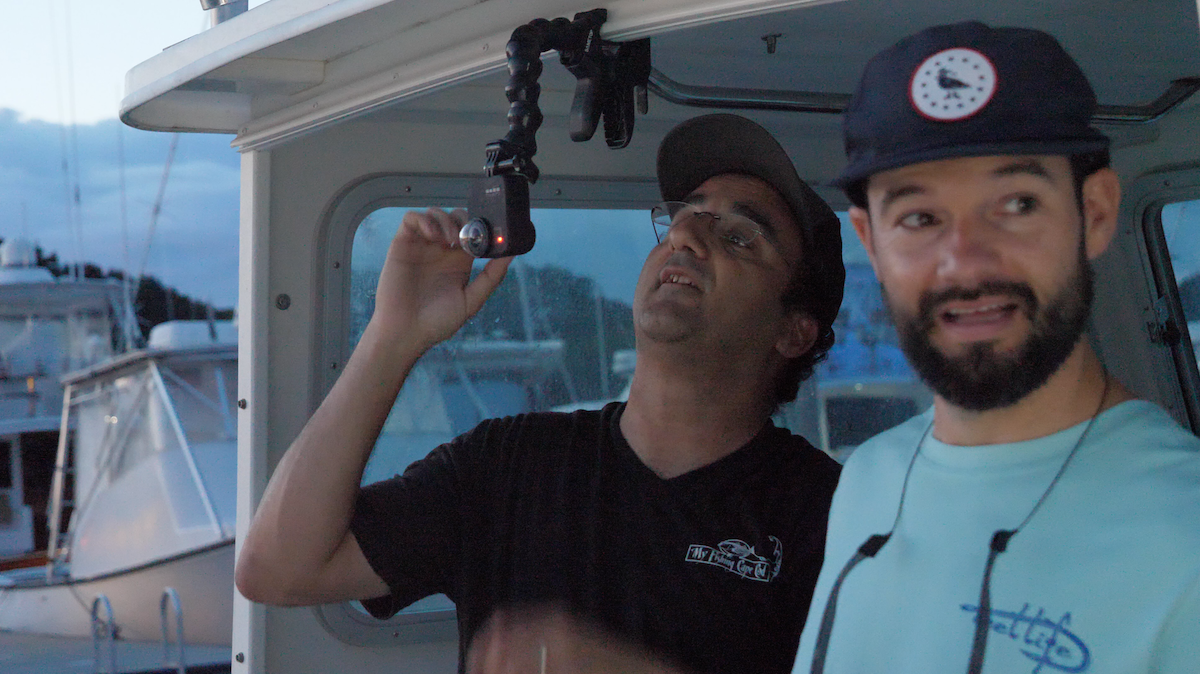
Members Eddy Kooyomjian (left) and Tim Whitman (right)
I said, hello to everybody and got my camera gear set up. A few minutes later and we're all heading out of Saquatucket Harbor.
The tide was extremely low and we only had three and a half feet of water beneath our hull as we headed out of the marina.
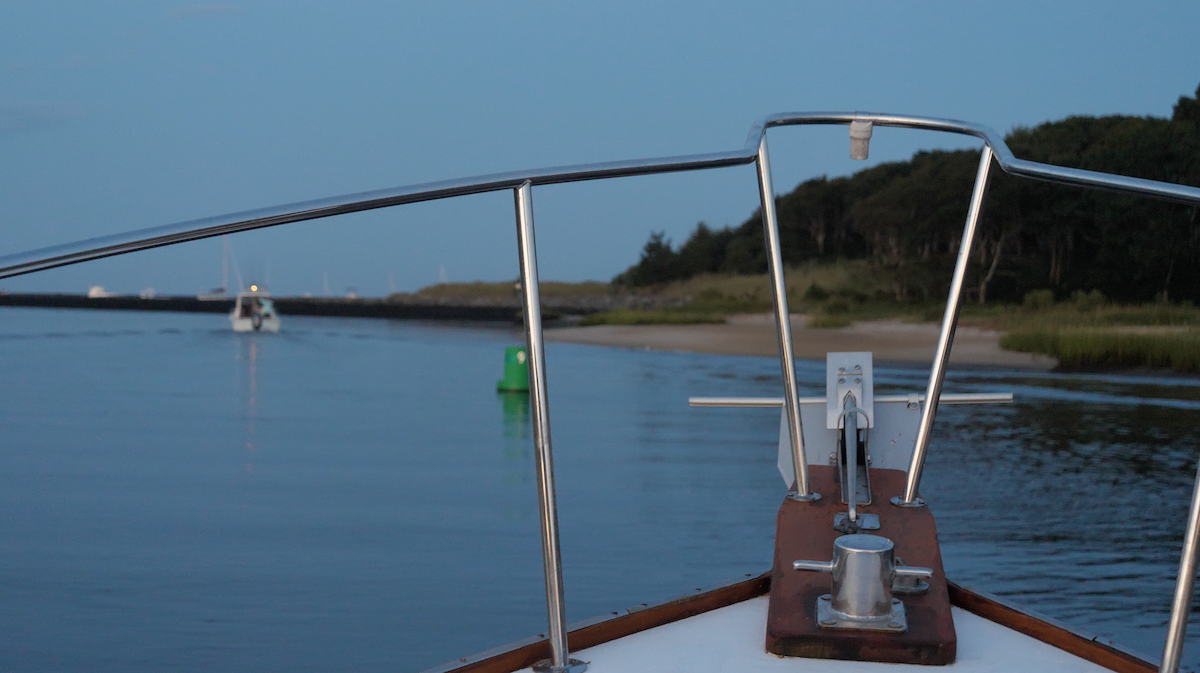
The view off the bow of Bruno's 26' Downeast boat the Gaviota as we exit Saquatucket Harbor in Harwich.
Once we hit Nantucket Sound the sun was coming up and conditions were smooth and flat calm. We couldn't have picked a better day to go fluke fishing!

Mark Bonvouloir has been a member of My Fishing Cape Cod since 2017
Before we headed southeast to the shoals, rips and channels southeast of Monomoy Island, we decided to stop at the tip of Monomoy and do some trolling for bonito.
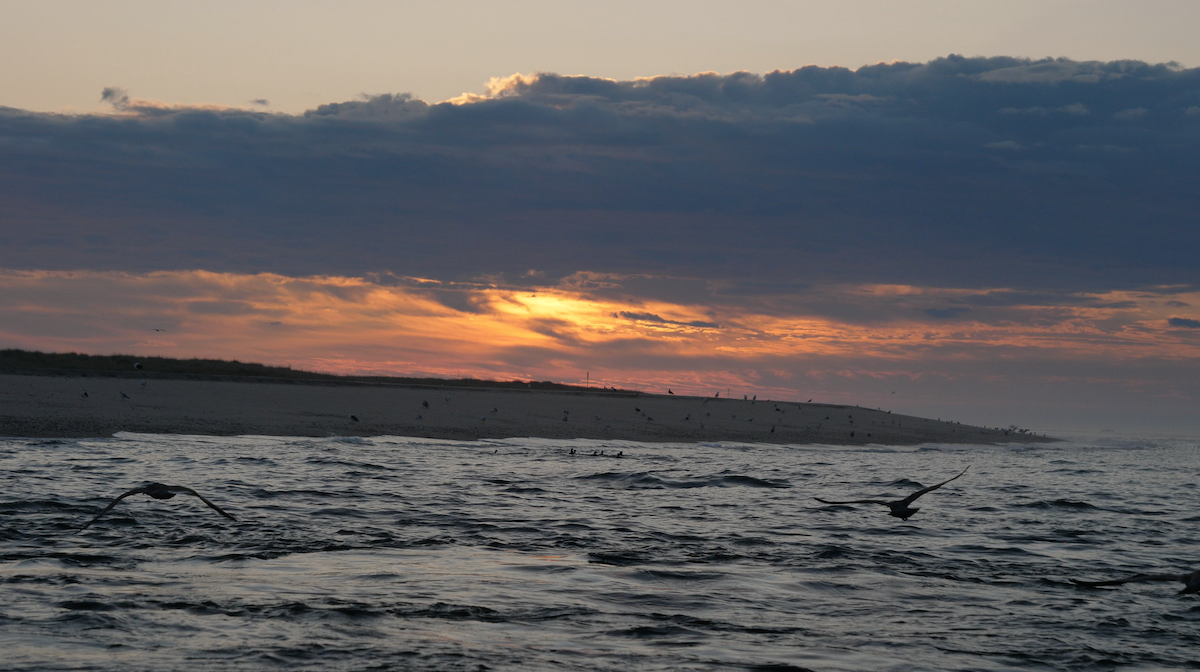
The sun rises in the distance over the tip of Monomoy Island this past Thursday August 25th.
There have been some bonito caught in this area, but I don't think the action has been "lights out".
Nevertheless, we decided to put some Yo-Zuris behind the boat and troll them at about six miles per hour, using light tackle spinning gear.

Trolling Yo-Zuris at 6-7 mph is a surefire technique for albies and bonito.
Schoolie stripers were feeding amongst the rips and the birds were going crazy. Quickly we had a bite, but it wasn't the species we were looking for.
We could see bait and bass on the sonar, and it was clear that there was a lot of life in the area. However, the bonito and the albies were nowhere to be found.

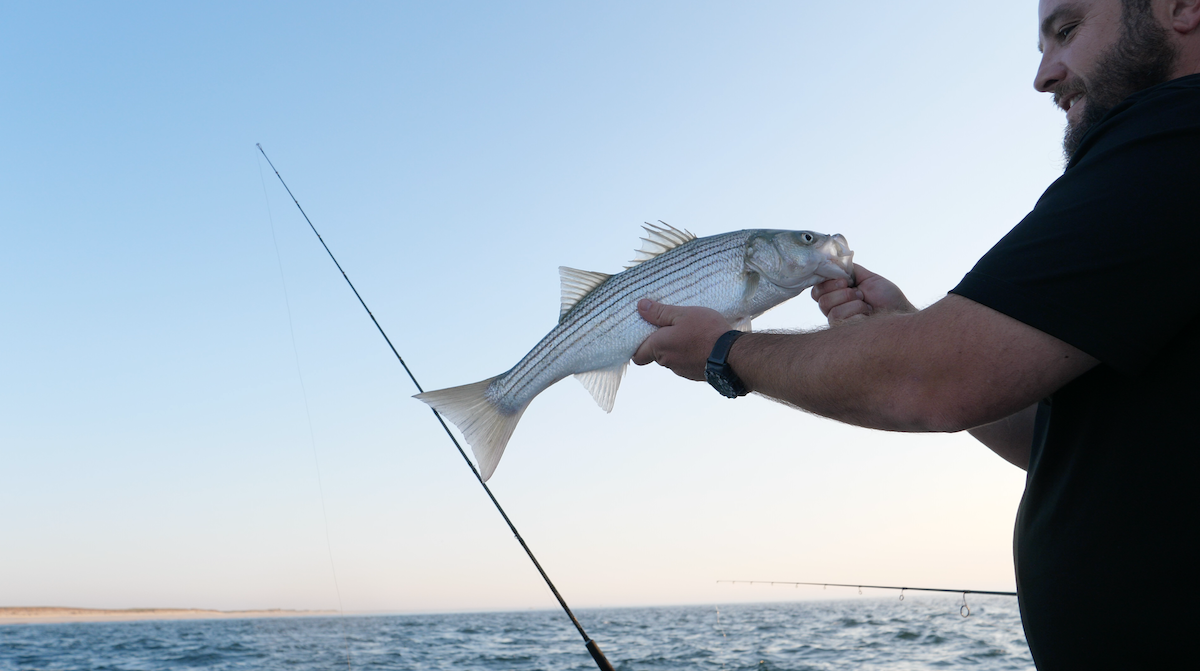
MFCC member Bruno Demir with the first fish of the day - a schoolie striped bass caught trolling a Yo-Zuri. During this trip we were fishing aboard Bruno's beautiful 26' Downeast boat the Gaviota, which means "little seagull" in Spanish.
So after about 30 minutes of trolling around, we decided to continue our voyage southeast to the fluke grounds. By 7:30am we had arrived at our first fluke fishing spot of the morning. We put our baits down in the water and began to drift.
For tackle were using very heavy bucktail jigs (upwards of eight ounces) on a three-way rigged with a Monomoy Tackle Fluke Spoon.
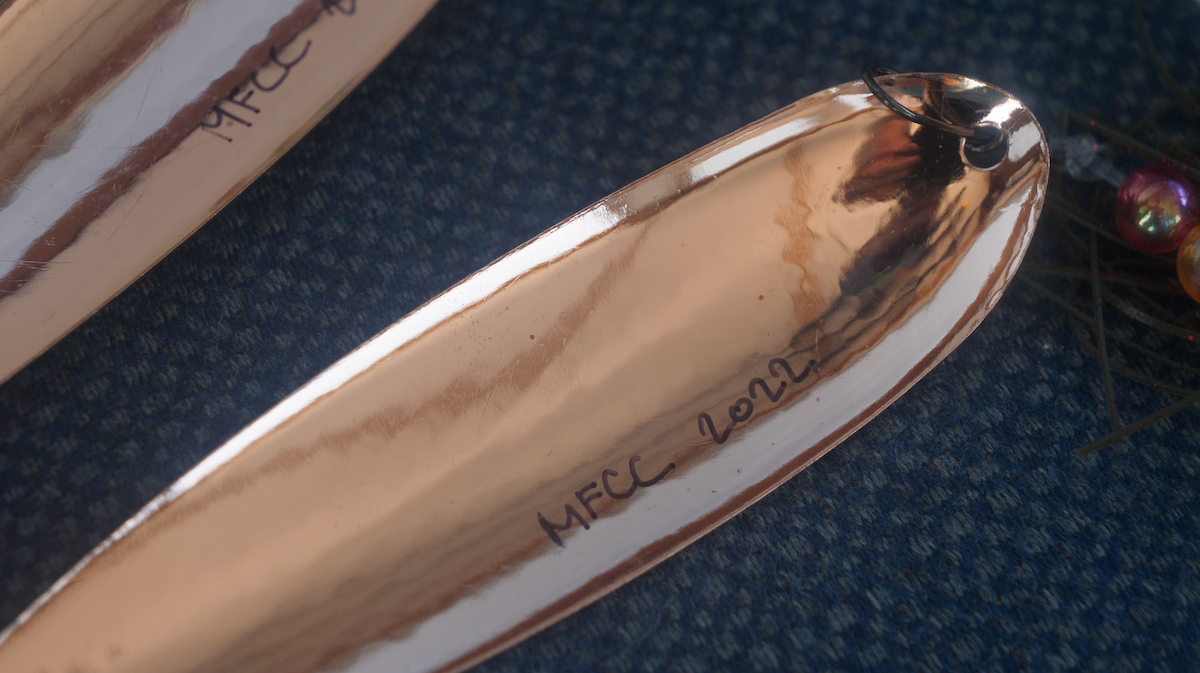
Fluke spoons tipped with bait would prove to be very effective during this trip.
The spoon was baited with squid, spearing, or fluke belly. Adding actual bait to the spoon makes a big difference.
As we were drifting along we started marking fish on the sonar. However, that wasn't a particularly good sign because as you might know, fluke lay along the bottom, so you don't often mark them on the sonar.
Bruno figured that the species of fish that we were marking on the sonar were probably dogfish, and sure enough, Mark hooked up right away with a big doggie.
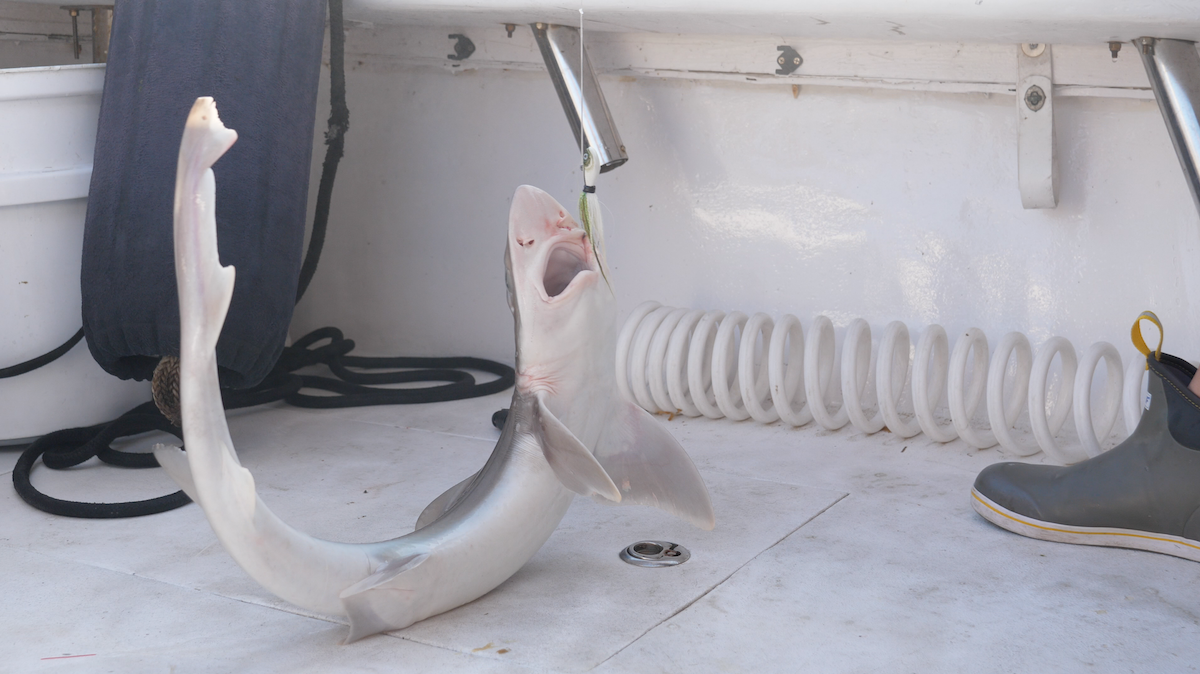
This smooth dogfish was destined for my dinner table.
When Mark got the dogfish to the boat I noticed it was a smooth dogfish, which can be very good eating. I decided to keep the dog fish and immediately cut its head off, gutted it, and bury it in ice. Keeping the dogfish buried in ice would help ensure that the meat would be firm and of good quality.
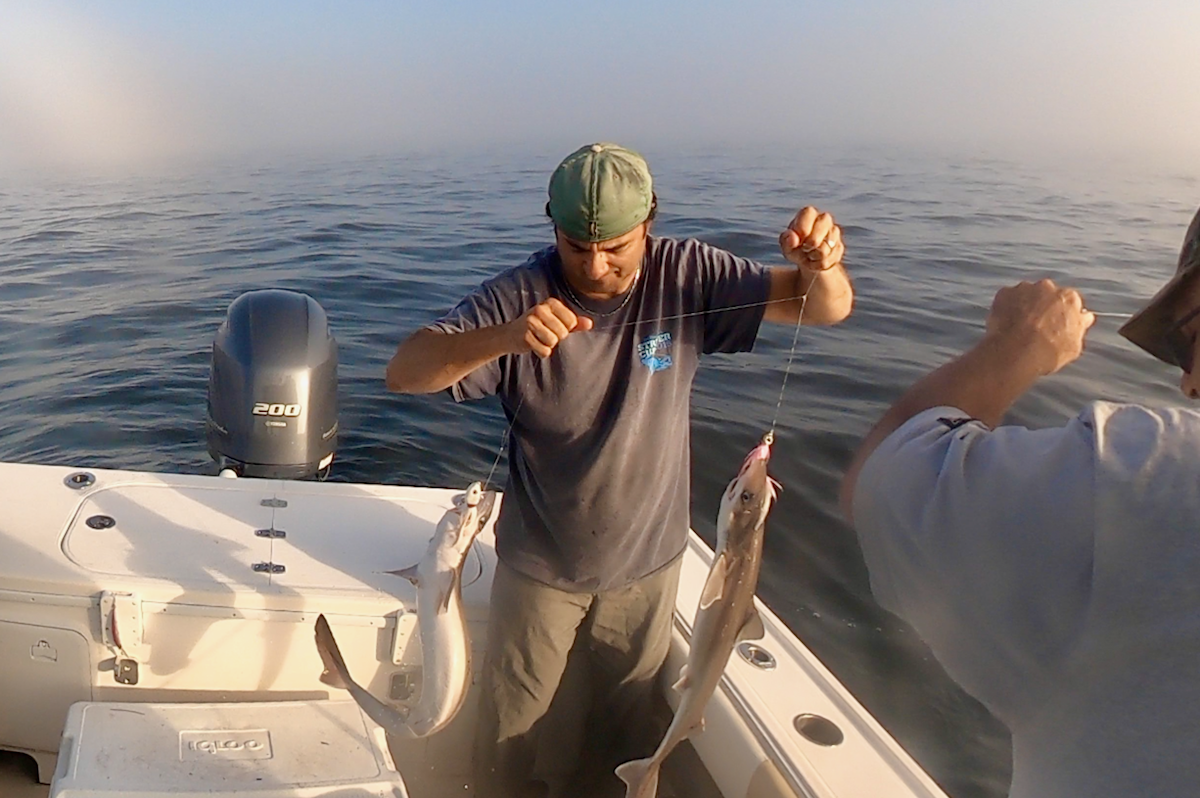
Eddy Kooyomjian and his crew with a dogfish double header.
After catching a few more dogfish, Bruno decided that we better move. We continued south for another couple of miles to another shoal that has treated Bruno well for fluke in the past.

The fog was dense during the first part of this trip, as is often the case when fishing southeast of the Cape.
We dropped our rigs to the bottom and began another drift. Our drifting speed was about 1.5 miles per hour, which is picture-perfect for big doormats.
When fluke fishing, you need to be drifting at least 1-2 miles per hour or else you're not going to catch. You need to have your presentation moving along the bottom and covering ground.
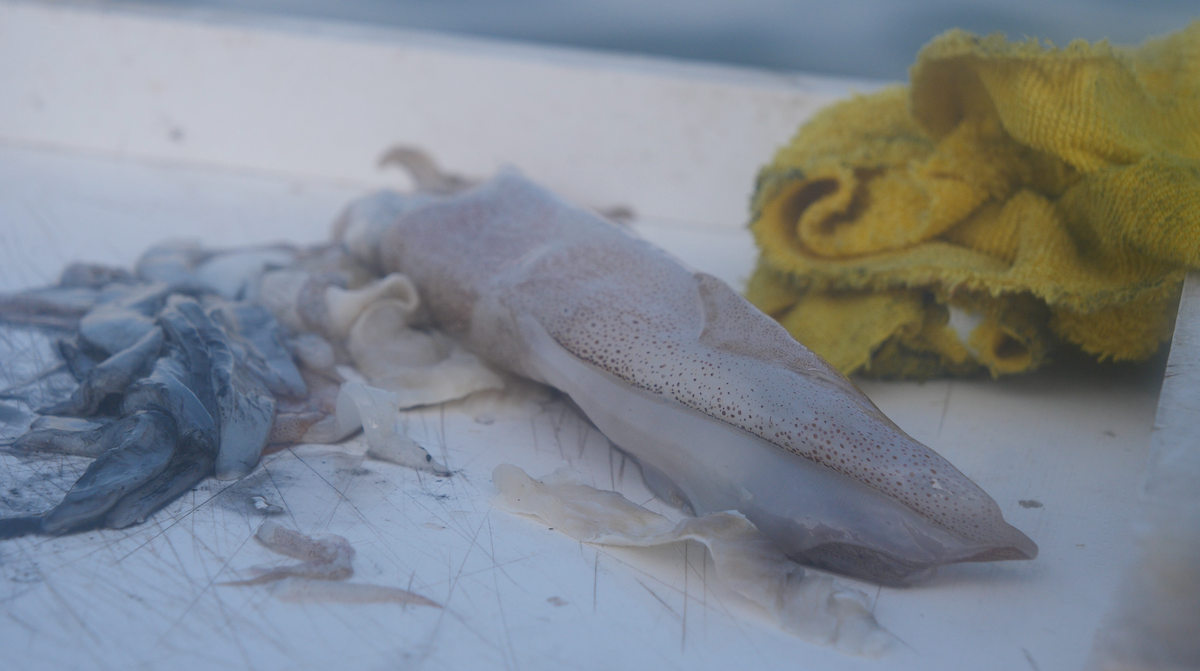
When fluke fishing, always be sure to tip your hooks with a strip of squid (pictured above), fluke belly, bluefish, mackerel or spearing.
As we are drifting, Bruno's sun Emir hooked up, and it was clear that this was a good fish. When fluke bite, you can oftentimes tell that it's a fluke because of the head shakes and the way they fight.

Bruno's son Emir hooked up with a keeper-size fluke, as Bruno prepares the net.
Bruno's son Emir did a good job keeping steady tension on the line, and as he brought the fluke towards the boat, we got the net ready. With a swift dip of the net Bruno brought a beautiful low 20 inch fluke over the rail and onboard the boat.
The minimum size for fluke in Massachusetts is 16.5 inches with a daily bag limit of 5 fluke per angler. This fish was about 5 inches over the minimum size so we put the fluke in the cooler to bring him home for food.
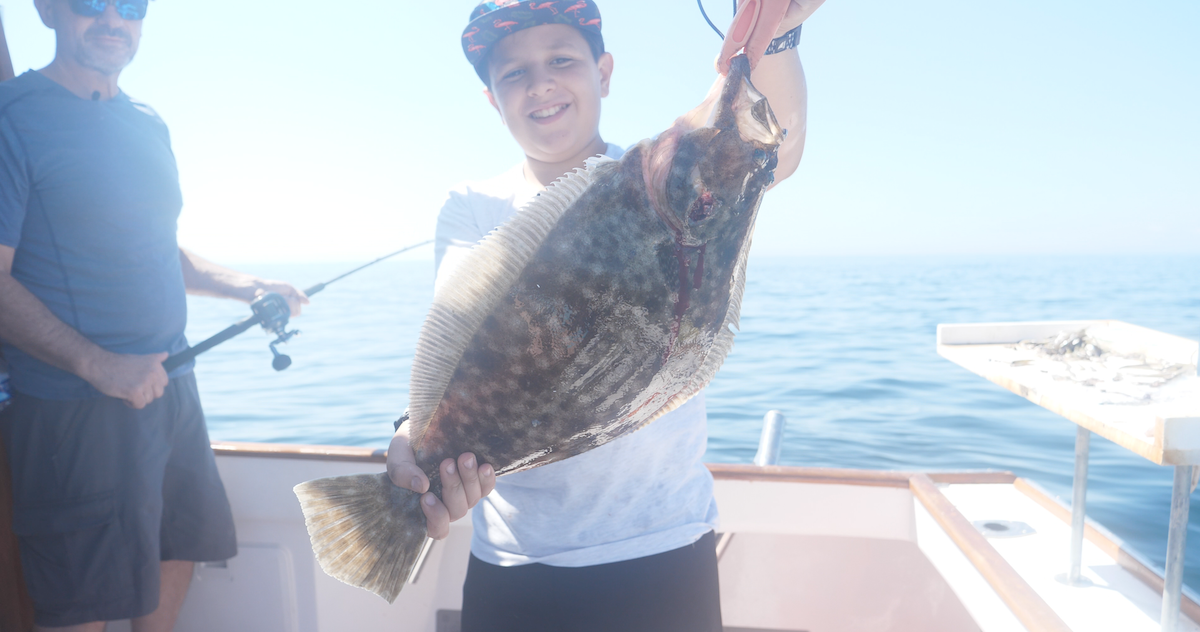
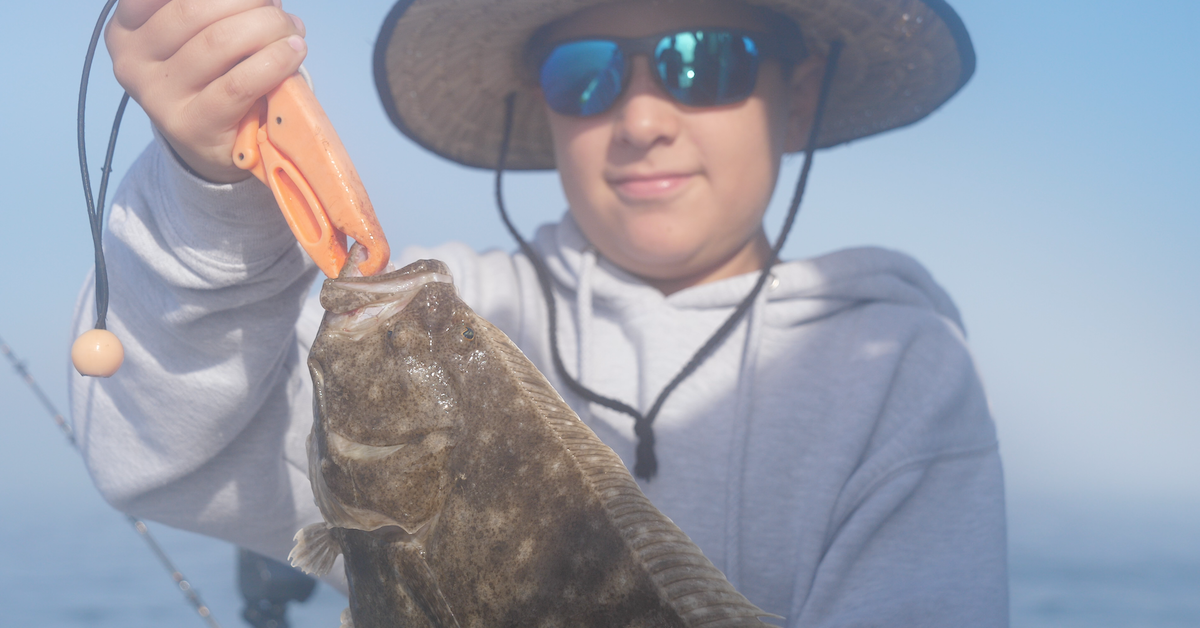
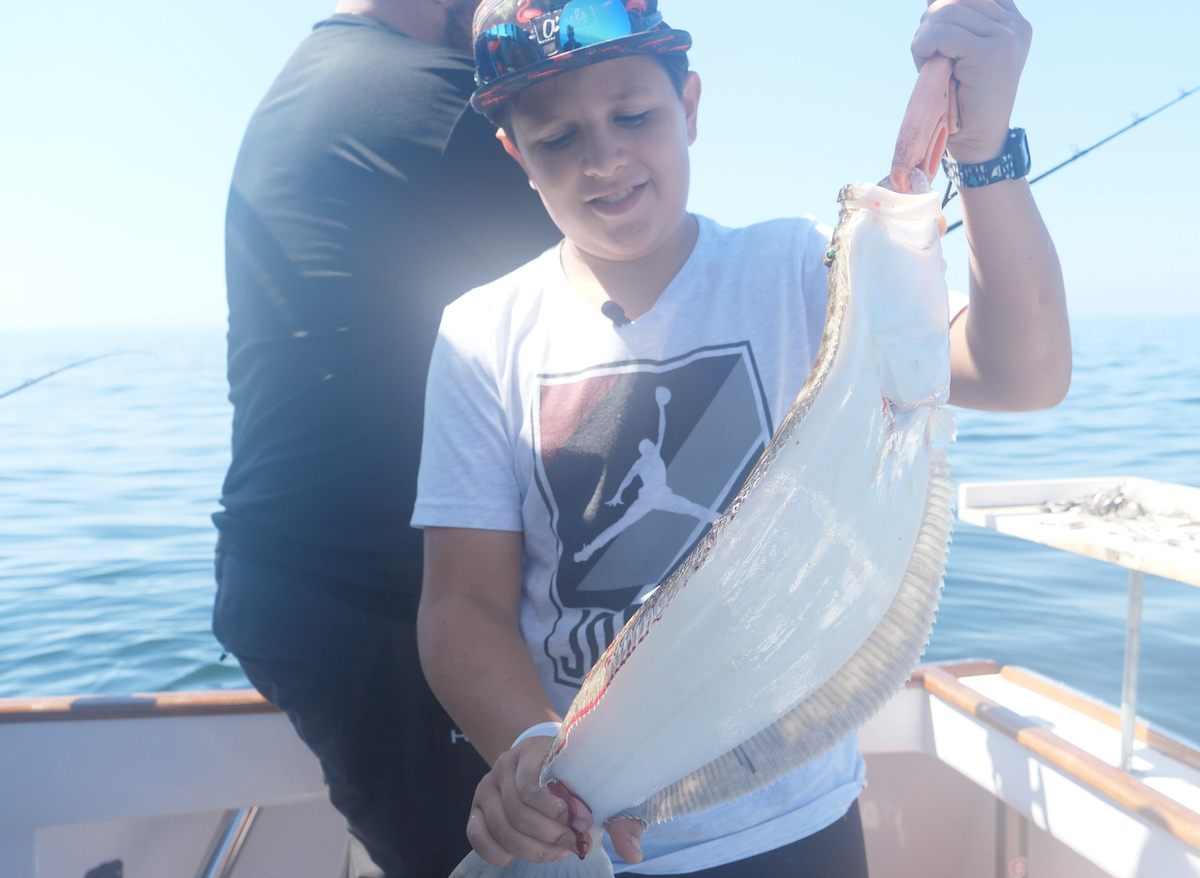
Emir with one of the several 20+ inch fluke he caught during our August 25th trip.
The action continued and the fishing was getting good. It was clear that we had found a good amount of fluke on this particular bottom, so I decided to put a camera on the line to see what was down there.


A tremendous cause and a great day to bring people together to fish. Thanks Mark, Tim and everyone else that donated and makes it possible to reach advances in cancer research and care.
And thank you for donating your time and your boat! I also appreciate the “fluke recon” you did prior to this trip. The black sea bass you gave me has been put to good use as well. I smoked some of it, and made ceviche from the rest of it.
Great write up Ryan! You guys had an adventurous day! Wow, on all the species caught! Congrats to all!
Thanks for the comment Leslie. Today we are enjoying ceviche that we made from the dogfish, skate, black sea bass and fluke. It’s delicious!
Great recap !
Phenomenal day with great people and great cause. Thanks to Bruno, Ryan and Eddie for putting it all together and being completely gracious. These guys know how to fish!
It was a pleasure to finally get a chance to fish with you Mark. Maybe we can nab a white marlin sometime in the future!